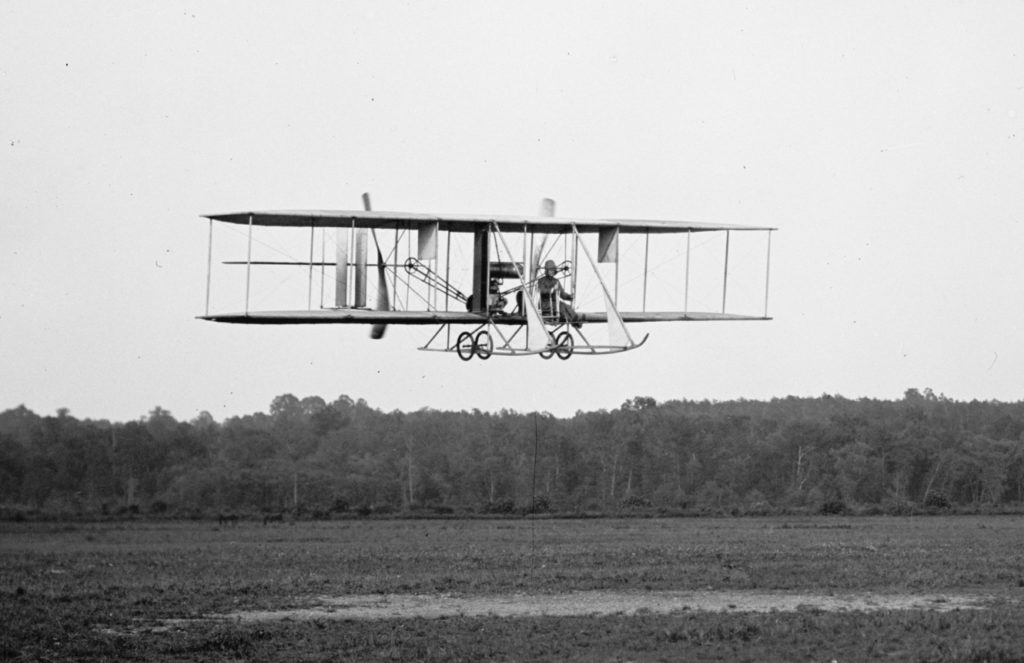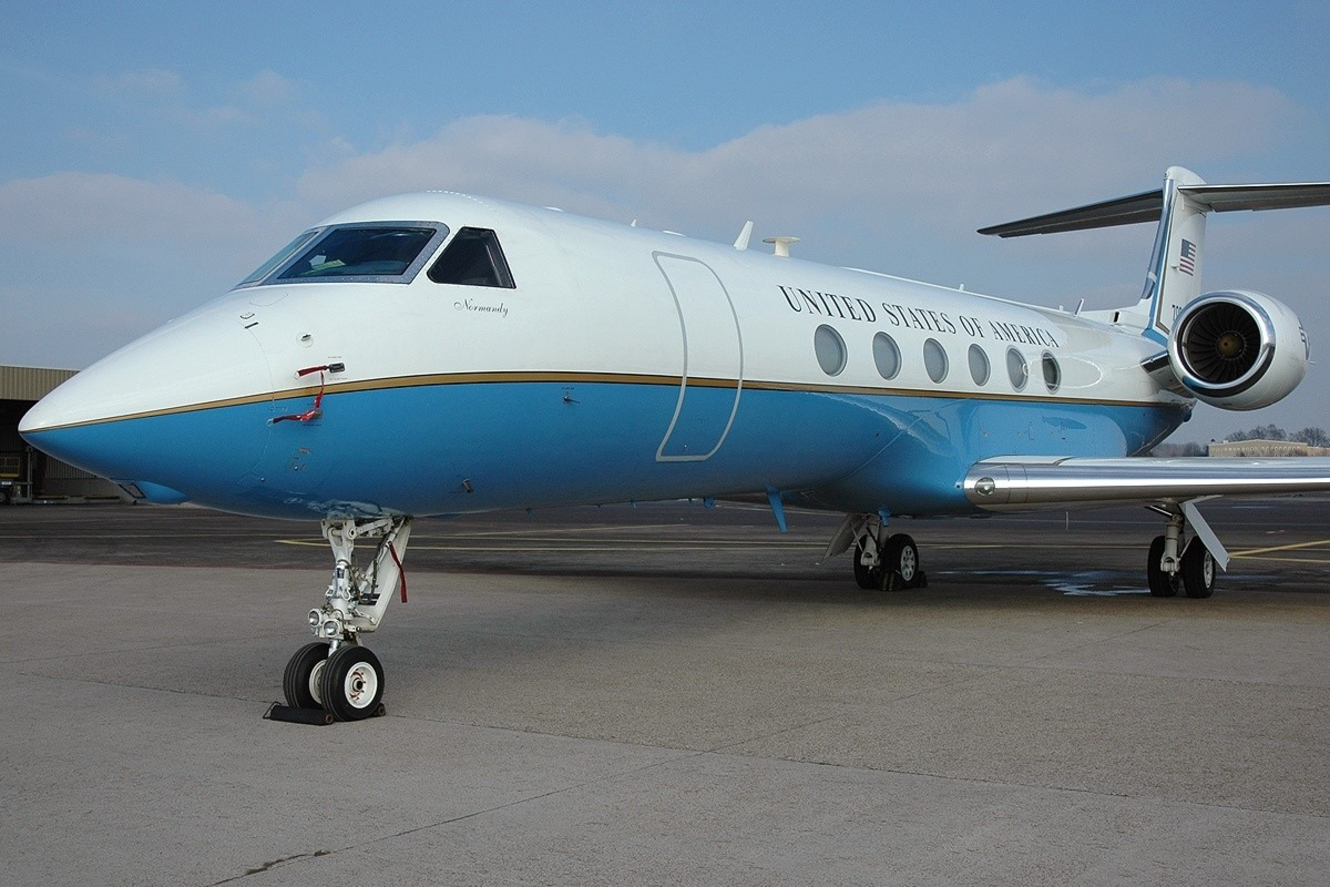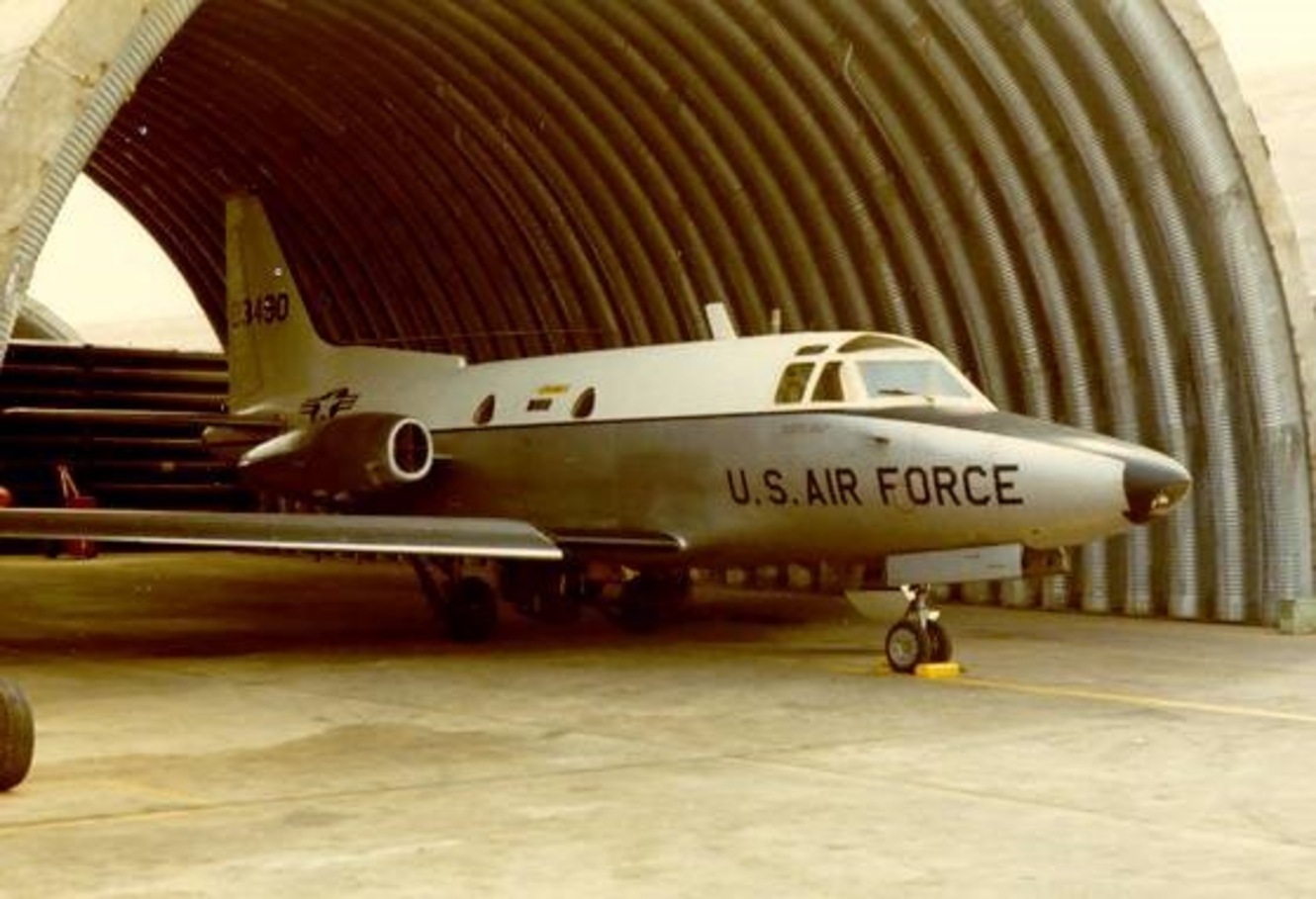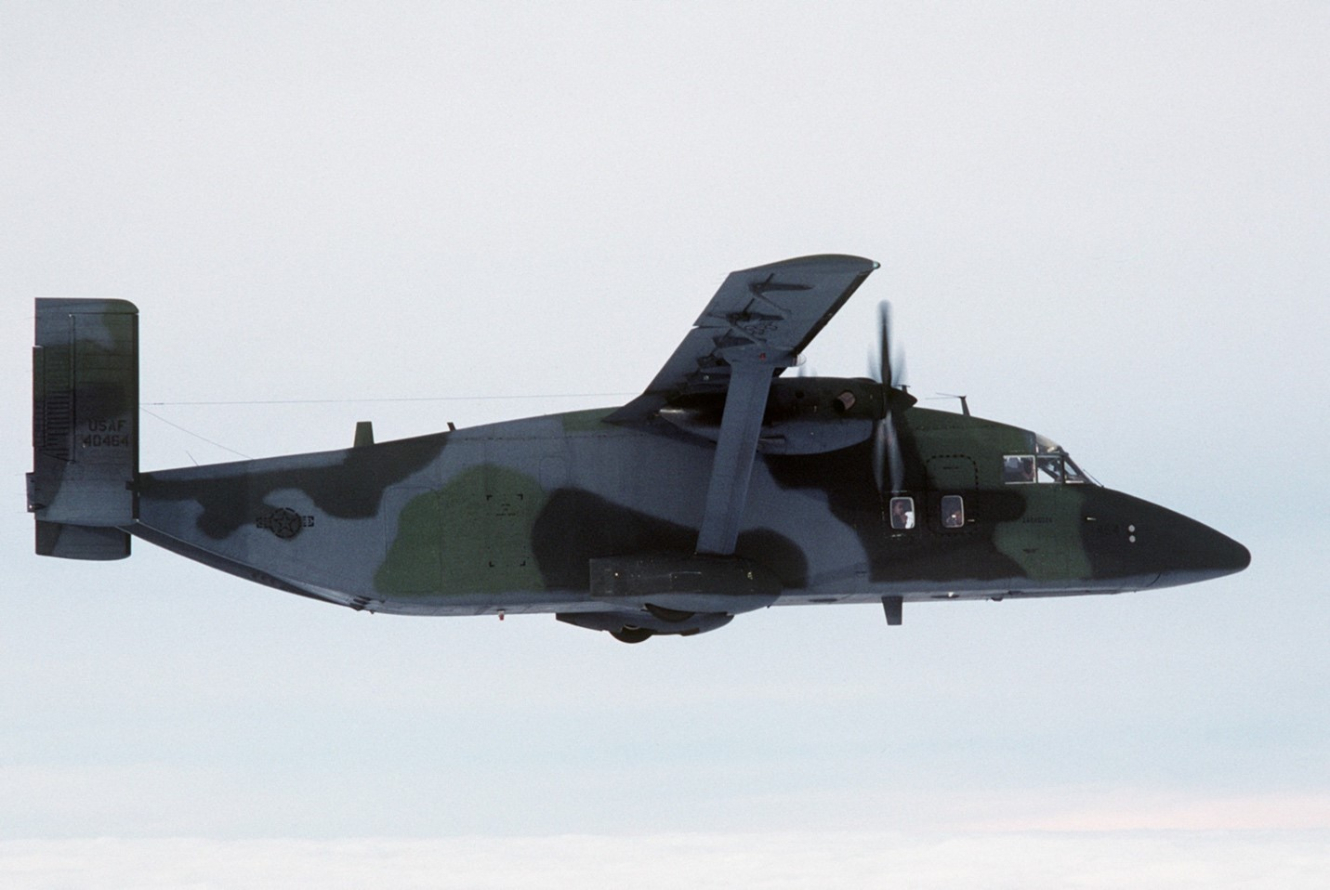Airpower Orphans, Part I: Putting the “Operational Support” Back in Operational Support Airlift

On Nov. 7, 1910, 24-year old Philip Parmalee took off from Huffman Prairie airfield, a glorified cow pasture in Ohio, in a Wright Model B aircraft. Sixty-six minutes later, he landed at a flag-marked racetrack in Columbus, successfully delivering 100 pounds of silk ribbon, and completing the first commercial air cargo delivery. Experimental airmail delivery in the United States started the following year, and on May 15, 1918, the Postal Service initiated regularly scheduled airmail service between New York and Washington, D.C. By this time, however, the Post Office was merely following the lead of World War I airmen, who had already been using aircraft to deliver critical messages, and to move individuals from where they were to where they needed to be.
That function endured decades after the widespread use of radio allowed distant communications. Indeed, the first large-scale scheduled airline service was the appropriately named “Model Airway,” introduced by the Army Air Service in 1922 to ferry personnel between what grew to 10 airfields from Texas to Ohio to Washington, D.C. By 1926, the Army had flown 671 scheduled flights, moving 1,200 passengers and 62,000 pounds of freight. Today, the descendent of that service is a fleet of aircraft designated as “operational support airlift” (OSA), intended to move passengers in a timely and cost-effective manner. In theory, OSA is a wartime support mission, but in reality, it is half of a wartime support mission. OSA has evolved into a government-run, VIP transport service that, while cost-effective and entirely necessary, does not haul much cargo at all. As the possibility of conventional warfare in Europe or Asia looms large in defense planning, the U.S. operational support airlift fleet is missing the capability to haul cargo that can’t be crammed into executive transport aircraft. It’s time to restore the missing unit-focused, cargo-hauling capability and rethink the wartime role of operational support airlift.
Back in the Day
The airplane got its first major test in World War I, when the ability to place observers above the high ground spawned observation aircraft in large numbers, and later fighters (pursuit aircraft) intended to shoot them down. To rapidly transport people and limited cargo, such as time-critical dispatches or plans, the Air Service used two- and three-seat aircraft despite the limited payloads. The ability to hop from one field to another, over the often-sodden roads behind the battlefield, spawned the first air mobility operations, which included troop transport and even aerial resupply. The aeroplane provided flexible transport at a hitherto unheard-of speed.
After World War I, the aeroplane’s ability to carry cargo or more passengers was an obvious application that the Army capitalized on. Army contractors delivered the service’s first bomber aircraft, the Martin MB-1, in 1918. Engineers converted one of the 20 built aircraft into a passenger configuration (called the GMP, for Glenn Martin Passenger) by simply putting 10 seats in the bomb bay and cutting windows into the fuselage. It turned out to be unsuitable for troop transport, so the Air Service used it to transport enlisted aircraft mechanics, tools, and parts. For its Model Airway flights, the Army instead used converted DH-4 bombers and the T-2, a renumbered commercial Fokker F.IV. While aeroplanes had flown cargo, the amount of cargo they moved during the life of the experiment was a mere five pounds per passenger — hardly enough for even an overnight bag. This early operation saved the Army from having to pay express railway fees, but Congress passed the Commerce Act in 1926, terminating the model as a threat to private enterprise.
The Air Service was undeterred. By 1926, the Army was already buying the Douglas C-1 airliner and by 1930 purchasing other commercial designs and distributing them to Army airfields in pairs as part of a theater distribution system for “emergency transport of mail, ammunition, staff officers, carriers, and possibly small detachments.” Rather than maintain a scheduled airline, the Army continued to perform exactly the same mission as the model airways, only now with airlift assigned to specific units. The Army continued to expand its organic airlift and by 1935 ordered its first aircraft (a Douglas DC-2) equipped with desks and filing cabinets. The Army intended for these aircraft to supply unit needs associated with day-to-day operations. Most of those unit needs involved transporting staff (not combat forces) in a timely and efficient manner at the behest of the unit and not as part of a global air mobility enterprise. By the 1930s, the precursors to what the Air Force now calls “operational support airlift” were in place, and the precedent was set – OSA aircraft would be off-the-shelf civil designs.
The Department of Defense (DOD) describes Operational Support Airlift (OSA) missions as a special category of airlift missions that involve the movement of a limited number of high-priority passengers and cargo with time, place, or mission-sensitive requirements. OSA missions can be performed by a wide variety of aircraft, but DOD generally describes its OSA aircraft fleet in terms of two groups, its executive aircraft and its nonexecutive aircraft. Executive aircraft provide air transportation for federal and DOD-approved senior leaders, and are configured to support travel when other aircraft do not provide the timeliness, security, communications capability, or workspace required… Nonexecutive aircraft are used to fulfill wartime requirements, contingency operations, domestic support missions, and day-to-day activities. As of May 2017, DOD had 287 OSA aircraft—44 executive and 243 nonexecutive aircraft, which is a small portion of DOD’s overall aircraft inventory. (GAO-17-582: Operational Support Airlift)
The Missions
Since the Commerce Act of 1926, the Department of Defense has had to continually justify the OSA mission. It has always succeeded. OSA saves the government time and money over passenger rail and air transport services. OSA aircraft are commercial derivatives and will often go where commercial aircraft will not or do not go (the authors have used OSA aircraft to get to airfields commercial aviation does not service). It is also true that OSA aircraft transport small amounts of cargo. OSA have a wartime mission, too. OSA aircraft fly throughout Southwest Asia and have for almost three decades of continuous combat operations. But in theory, that wartime mission includes cargo transport. In reality, the amount of cargo OSA moves is of marginal significance. Certainly, OSA can load critical items that personnel can fit through an aircraft passenger door or shove into the cargo compartment with the luggage. But cargo hauling is not really what OSA aircraft do. On a flight out of Kandahar, Air Force personnel advised one author to load his armor, ammunition, and rifle into the baggage compartment of a C-20 so as not to scratch the leather seats. The reality is that OSA aircraft are generally painted like civil aircraft and designed to transport passengers in air-conditioned, digitally-connected comfort to long, hard-serviced runways. In this respect, the Department of Defense’s “nonexecutive” OSA looks a lot like executive OSA. There are no leather seats in C-130s nor paratroop web seats in VC-20s.

Figure 1: A C-37A, the military variant of the Gufstream V (U.S. Air Force photo)
It isn’t hard to conceive of a wartime mission for OSA aircraft, since the need to move personnel and documents by air has existed since World War I. “Modern” bizjet-based OSA first established itself in Vietnam where, until 1965, the Air Force used the T-39 Sabreliner for “VIP transport, R&R, and limited intelligence air travel.” After 1965, contractors made more OSA aircraft available, and, in addition to their VIP transport role, these aircraft served as photo couriers between the various reconnaissance and intelligence facilities and moved classified information, a mission called SCATBACK. The R&R function returned to civilian airlines. T-39s, which handled runways of at least 5,000 feet in length, performed the OSA mission with the U-3B “Blue Canoe” handling short strips. The Air Force logged missions flown in South Vietnam, Laos, and Cambodia as combat missions. SCATBACK missions lasted until 1975 under priorities Seventh Air Force established:
- Reconnaissance and intelligence material delivery;
- Official mail delivery;
- Combat-essential or not operationally ready, supply (NORS) delivery;
- Official business passenger travel as directed by Seventh Air Force.

Figure 2: T-39A Sabreliner at Tan Son Nhut AB, Vietnam, circa 1970 (Photo by Lt. Col. Jim Reed)
However, the OSA experiences during Operations Desert Shield / Desert Storm also showed some glaring inadequacies in training, equipment, contract logistics support and command and control. It was indeed fortunate that the shooting war did not start until January 1991 because OSA forces were not ready to operate in a war zone when they arrived in the AOR and for quite some time thereafter.
–Making OSA Ready for War, Col. David Dyche, 1995
The next war for OSA was the Gulf War, which opened with OSA woefully unprepared for a wartime mission — but they gave it a go nonetheless. Upon arrival, the Air Force used its C-21s for staff transport to and from the Air Operations Center based in Riyadh, and for spare parts transport elsewhere in-country. Requirements to fly VIPs initially took precedence over all other requirements: The Air Force could fly spare parts not requiring a C-130 on scheduled C-21 flights and add missions if delivery was time-critical. Despite their small cabin space, C-21s flew opportune cargo on almost every mission, including thousands of technical orders distributed throughout theater. By the time combat operations began, the Air Force returned OSA aircraft to their Vietnam role — transporting intelligence (including F-117 gun-camera and U-2 reconnaissance films), and standing by to courier the air tasking order in the event secure fax lines failed. Predictably, when combat operations ended, OSA aircraft resumed transporting VIPs — including “combat tourism” flights over a war-ravaged Kuwait. All told, the Air Force OSA birds flew over 2,300 sorties, moving more than 3,500 passengers and 95,000 pounds of cargo. The Marine Corps’ experience was similar. Two Marine UC-12 aircraft based at Bahrain International logged 1,297 flight hours, carrying 1,816 passengers and 59,690 pounds of cargo. Like their Model Airways predecessors, the UC-12 aircraft hauled cargo that was a fraction of the passenger haul (33 pounds per passenger for the Marines, 27 for the Air Force) but that often consisted of critical, time-sensitive orders, photos, and documents.
The Aircraft
Today’s operational support aircraft are almost entirely dedicated to moving personnel. All of the OSA aircraft in the Department of Defense’s inventory are airliners, business jets, or through the ubiquitous Beechcraft C-12, business turboprops. OSA aircraft are not designed or configured to haul cargo, nor are they intended for forward airfields. Only the C-12F has a cargo door, and with the seats removed can carry about 2,000 pounds of cargo. The Air Force should now consider the lack of cargo capability, and the ability to deliver it to forward airfields, a critical mission gap for OSA aircraft. Indeed, the current crop of aircraft, mostly airliners and business jets, are particularly ill-suited to wartime requirements in Europe. A generation ago, when the Air Force was considering purchasing the C-21 aircraft, the Vice Commander of U.S. Air Forces Europe suggested that the service procure the aircraft in a wartime, camouflage paint job, like the C-23 Sherpas. That never happened – OSA aircraft often land at airfields where camouflage paint is uncommon or unwelcome.
| Military | Civil | Type |
| C-9 | McDonnell Douglas DC-9-30-F | Airliner |
| C-12 | Beechkraft King Air | Business Turboprop |
| C-20 | Gulfstream III | Business Jet |
| C-21 | Learjet 35A | Business Jet |
| C-26 | Fairchild Metroliner 23 | Turboprop Airliner |
| C-32 | Boeing 757-200 | Airliner |
| C-37A/B | Gulfstream V / 550 | Business Jet |
| C-40 | Boeing 737-700 | Airliner |
| UC-35 | Cessna Citation 560 | Business Jet |
The U.S. military uses commercial variants for the same reason they used these aircraft in 1930 — they are efficient; common; easy to operate, support, and maintain; have a small and inconspicuous profile; and do not require the government to fund development costs. These aircraft do not and never have filled cargo-hauling roles — the military has always used dedicated cargo-hauling aircraft. In the 1960s and 1970s, the Air Force had the C-7 Caribou, a light airlifter which serviced all corners of Vietnam — not just the comfortable ones. In the 1980s, the Air Force procured the aforementioned C-23 Sherpa to fill a niche as the European Distribution System Aircraft (EDSA) — intended for in-theater, base-to-base movement inside Europe, and not as an OSA aircraft.

Figure 3: A U.S. Air Force Short C-23A Sherpa aircraft (s/n 84-0464) from the 10th Military Airlift Squadron in flight over West Germany on December 17, 1985. (U.S. Air Force Photo by Master Sgt. Patrick H. Nugent)
The Next War in Europe
The Air Force retired the Sherpas in November 1990, as the Soviet threat in Europe evaporated. The standup of Military Airlift Command in 1985 had already crushed unit-based air cargo transport; now the retirements of the C-7 and C-23 flattened the same service at the command level. The Air Force never recovered its light tactical airlift — although the Army still flew C-23s (including in Iraq) up until 2014. With a return of Russia to an active (and unwelcome) role in European affairs, it seems that the need for a short-haul cargo aircraft is acute. The authors believe that short-haul air cargo movement is an essential element of distributed operations — spreading combat forces out to mitigate the effects of Russian attack. Similarly, the use of airpower in the so-called gray zone practically demands a light airlift capability.
It doesn’t matter to what warfighting paradigm one subscribes — a conventional fight in Europe always poses a logistical challenge that air capability can at least partially surmount. Keep in mind that the methods on which individuals currently rely for fast air delivery of high-priority packages — FedEx and DHL — are not going to operate in threatened areas. Unfortunately, it is likely Air Mobility Command will heavily dedicate airlift to hauling troops and materiel to Europe rather than within Europe. This is precisely the niche that designers engineered OSA to fill — as long as blue- and white-painted business aircraft continue to deliver people and small packages. The cargo-hauling niche is unfilled.
Adopting an Airpower Orphan
Force structure changes over time. The C-23’s retirement coincided with a massive drawdown of conventional forces in Europe, including the decimation of the Air Force’s European-based fighter force and the Army’s combat formations. As NATO force structure drew down after the Gulf War, the Air Force allowed many formerly necessary warfighting capabilities to atrophy. But the one-time elimination of a capability under conditions that prevailed 30 years ago should not preclude revitalizing an old capability if a service once again needs it. The Air Force faced that same conundrum in 1964 when it found itself without attack and observation aircraft. The U.S. military now has the luxury of time — hostile Russian activities in the Baltics, Georgia, and Ukraine provide the country with adequate strategic warning — if its leaders are wise enough to heed it. Most of the parts that the Air Force needs are in place — what it needs is commercially available, short-takeoff and landing cargo aircraft that the civil sector still widely uses. The Air Force can configure aircraft like the recently modernized Viking Twin Otter or the newly unveiled Cessna Skycourier for cargo, passengers, or both, providing a high degree of airlift flexibility in a small package. If the United States is to be serious about the wartime role for operational support airlift, that seriousness should expand to include critical cargo.
Col. Mike “Starbaby” Pietrucha was an instructor electronic warfare officer in the F-4G Wild Weasel and the F-15E Strike Eagle, amassing 156 combat missions over 10 combat deployments. As an irregular warfare operations officer, Col. Pietrucha has two additional combat deployments in the company of U.S. Army infantry, combat engineer, and military police units in Iraq and Afghanistan. He is currently assigned to Air Combat Command.
Lt. Col. Jeremy “Maestro” Renken is an instructor pilot and former squadron commander in the F-15E Strike Eagle, credited with over 200 combat missions in five combat deployments. He is a graduate of the U.S. Air Force Weapons Instructor Course and is currently an Air Force Fellow assigned to Air Combat Command.
The views expressed are those of the authors and do not necessarily reflect the official policy or position of the Department of the Air Force or the U.S. government.
Image: A Wright Model B airplane, piloted by Army Lieutenant Harry Graham, comes in for a landing at College Park Aviation Field in 1912. (Library of Congress)

